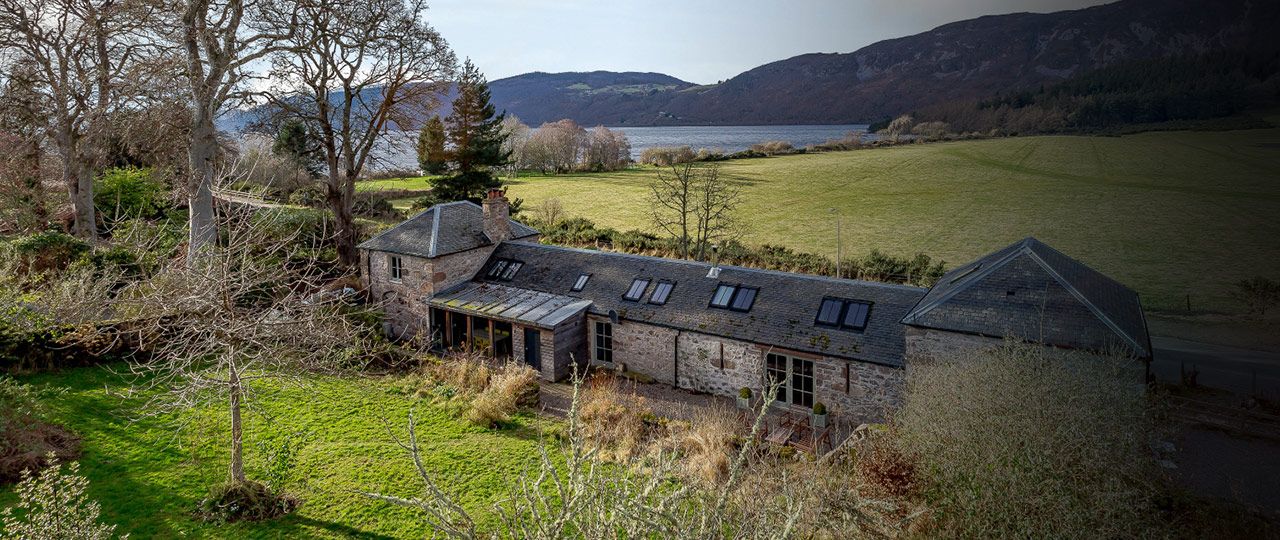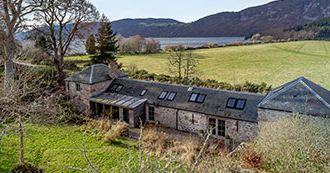
As restrictions ease on the Scottish property market, it is clear that demand for homes in rural Scotland has risen significantly.

With a very long list of viewings ahead, buyers are putting outdoor space at the centre of their searches. They are looking for homes with gardens, countryside properties and space to work from home; connectivity is essential and community more important than ever.
We have a long list of people waiting to see houses. It is clear at this stage that there is a lot of pent up demand, with some properties having several people waiting to see them. Our offices have seen a pronounced increase in enquiries about homes in the country.
Illustratively, in Strutt & Parker’s Town v Country webinar earlier this month, 74% of the audience said they would choose to live in the country now.
It remains to be seen whether this interest will translate into sales but the activity suggests there is genuine demand. Notably, visitors to the Strutt & Parker website are up 38% since property market restrictions were lifted in England a month ago.
The demand is underpinned by a shift in sentiment. A UK poll commissioned by Strutt & Parker and conducted by OnePulse surveyed respondents on what they would look for in their next property, having spent so much time at home during lockdown. Ticking all that applied, 32% prioritised a countryside location and 52% wanted a garden or more outside space. Inside, respondents wanted a bigger living space (38%), an extra bedroom (24%) and a dedicated home office (24%). 17% were focused on living closer to family and 16% prioritised a strong community spirit.
I think it’s fair to say that rural Scotland has even more appeal now than it did before lockdown. The appeal of factors such as a garden, proximity to open space, woods within walking distance and fewer people per sq mile has grown immeasurably. Additionally, working from home has now become a viable option for many, reducing the need to live in a city or within a reasonably short commute of an urban centre.
Changes in the way we work will have a fundamental impact on where we choose to live and, in terms of moving out of the city, Covid-19 has extended the search criteria. Some are looking for a family home with a garden in rural towns and villages or a house in the countryside but still want to be reasonably close to a city.
Additionally, there are those who expect to enjoy much more flexibility in their workplace with irregular days in the office; they are willing to move a bit further away and look beyond the normal commuter zone. For those people moving out of Edinburgh, for example, they are looking south towards Jedburgh, Denholm and Hawick and the surrounding countryside, north towards the stunning countryside of the Loch Lomond and Trossachs National Park. In the north-east, I think we will see more people looking at living in the picturesque East Neuk of Fife, which is traditionally very popular with holiday home owners. Heading east, the area around Innerwick, Cockburnspath and down towards Berwick-upon-Tweed is attracting interest; proximity to Berwick also offers easy connections to London via the East Coast Main Line.
In the last few years, we have seen a significant rise in London business people who have moved up to Inverness and the surrounding areas with their families – who benefit from excellent schools and a great outdoorsy lifestyle – and commute to London for a few days each week. We have had several enquiries of this nature in recent weeks and I think this trend will become more pronounced in the Highland market, particularly if they can choose to spend more time working from home.
Connectivity is another major factor, in terms of travel, technology and community. Previously, buyers might have looked at rural areas near a station with city connections but now they might consider a half-hour drive to that station. Internet technology is more vital than ever in facilitating home working. Additionally, people are looking for human connection. We have clapped on the streets, helped our neighbours with shopping, looked after each other and the old idea of community is suddenly much more important again. Would-be buyers are asking about the level of community within neighbourhoods. Do people care? Do people look after one another?
Additionally, our estates team has noted increased interest. The strength of appeal of rural and remote Scottish estates is abundantly clear in our conversations with potential buyers. They are attracted by the privacy and seclusion, significant outdoor space, breathtaking landscapes and less dense populations. The relative value for money is a key factor as well. While there has always been a demand for remote Scottish properties, from isolated cottages to traditional estates, the Covid-19 pandemic has heightened for some that yearning for the wild and romantic seclusion associated with Scotland’s rural landscape.
